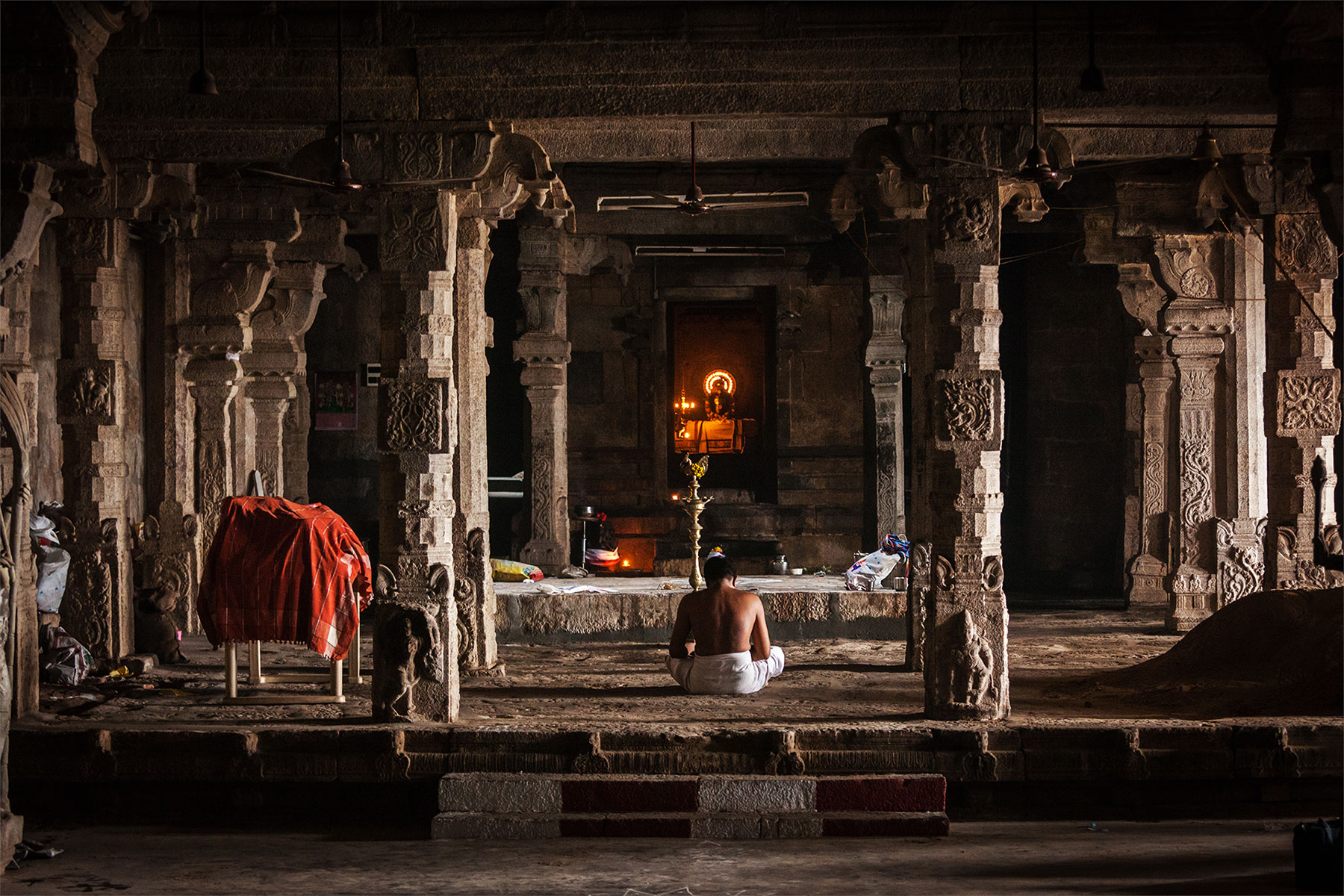Seeing Devi, our servant maid, brew a cup of hot filter coffee for my mother, thoroughly shook me up. Devi? Enjoying free access to that sacrosanct location in a Tamil Brahmin home, its kitchen? Free to light the stove, boil the milk, prepare a south Indian decoction, make a steaming hot cup of filter coffee? That too, for my nonagenarian mother?
Evidently, Devi has free access to every part of the house, including the kitchen, once considered inviolable by Brahmins. Four or five decades ago, an act like this would have been utterly inconceivable. Growing up, I remember servant maids barely had permission to walk inside our home, let alone enjoy unfettered access to the kitchen. When they did come inside, it was only to sweep and mop the floor, spending the minimal amount of time necessary to accomplish those chores.
Feminism in India Can’t Survive Without Empowering the Lower Castes
The rest of their tasks, such as cleaning the vessels, washing the clothes and drying them on a clothesline, would be done in the backyard. Taking their sense of cleanliness to a new height, vessels cleaned by the servant maid would be rinsed once again with water untouched by the servant before they eventually found their way into the kitchen.
I couldn’t help but reflect on the dramatic shift in attitude I observed in my family, belonging to the elite Tamil Brahmin upper caste, toward Devi, belonging to one of the lower castes. Is this experience unique to me and my family? Or is it something that is a reflection of the changing times in the traditionally conservative Tamil Brahmin community?
I knew scientific evidence based on facts regarding the social change I was ruminating on would be hard to come by. But I was convinced that if I tried, I would find anecdotal evidence of this shift toward a more liberal way of life among other Tamil Brahmin — or colloquially, Tam Brahm — families.
A Liberal Infusion
Every parent desires upward mobility and better quality of life for their offspring. Not surprisingly, Tam Brahms also subscribed to the same sentiment. This quest for upward mobility among Tam Brahms resulted in a generational shift in the type of career they aimed for. Gone was their desire to secure a steady job in a bank, central government organization or, as a distant consolation prize, in a state government organization. Instead, they set their eyes on professional careers, armed with degrees in engineering or medicine. Some sought to become entrepreneurs, a rarity in the past.
Securing professional degrees did not come easy for Tam Brahm youngsters. The Tamil Nadu state’s 69% caste-based reservation system in higher educational institutions meant many had to leave the comfort of their home and their home state in pursuit of those credentials. They may have left with apprehension, but that provided them an exposure to the outside world that was erstwhile impossible in the cocooned Tam Brahm way of life.
At a recent high school reunion, I had the opportunity to meet several of my childhood friends after a gap of more than 30 years. While many had spread their wings and flown far and wide, there were few who had stayed their entire life in Madurai, the town where I spent the bulk of my childhood. Conversations rarely went beyond the friendly banter befitting a reunion among childhood friends, but there were clear indications on where one stood on the conservative-liberal divide.
A scientific survey, had one been done, would have corroborated the following hypothesis: Those who had the opportunity to explore the outside world, especially at the defining moment immediately following high school, typically subscribed to more liberal views.
Aging and Necessity
Decades ago, living in the rural towns of Tamil Nadu, my parents were steeped in caste-based hierarchical distinctions. Being young, they had little reason to question their belief system or modify their core values. Surely, views and beliefs passed down through generations wouldn’t crumble with the nascent liberal perceptions of their youngest children? They did not.
During the phase when they were still strong and able, and I was behaving like an insufferable know-it-all, there were many occasions we simply had to agree to disagree. The shift I allude to started happening only as my parents started aging and developing a dependency on others. That shift accelerated when their primary caregivers, my older brother and sister-in-law, also entered the post-retirement phase of their life.
Most interestingly, the interactions I shared with my parents played out in a slightly modified form among my brother’s own family. Dispelling my doubts that this could be unique to my immediate circle, Purushothaman and Sathesh, two Tam Brahm friends of mine, corroborated very similar developments in their respective families.
Sathesh remarked that his mom started yielding gracefully once she realized that resistance was futile. Puru concurred, albeit, in a less colorful, non-Star Trek language, saying that his mom is not where he is (on the conservative-liberal social spectrum), but that she is far more tolerant compared to her past self.
As my mother entered her 90s, the demands on the care she needed increased. This set the perfect scenario for Devi to start playing an increasingly prominent role in the household work in order to ease the pressure on my brother and sister-in-law. It was not before the sexagenarian couple started embracing the help from their servant maid from an entirely different angle, while the nonagenarian matriarch was forced to let go of her deeply entrenched hierarchical distinctions.
Far from reluctant tolerance, Devi’s presence has found grateful acceptance among my family members.
Altruism?
In the past, Brahmins asserted their superiority by employing a variety of oppressive techniques. While many of them involved dehumanizing and stripping away the agency of those beneath them, withholding knowledge was by far the most effective technique they employed to stay on top of the caste totem pole. It is no surprise that the caste-based reservation system targets this very aspect in higher educational institutions, offering preferential treatment to a staggering number of non-Brahmin caste and communities.
This is not an article on the caste system in India, but I would unequivocally recommend “Annihilation of Caste,” a speech Dr. B. R. Ambedkar wrote in 1936, as a must-read for anyone interested in understanding this woeful practice.
In a dramatic U-turn from the behavior of withholding knowledge, it is now commonplace to see Tam Brahm households sponsoring the education of their servant maid’s children. Not only does this act guarantee upward mobility for those kids, but it also effectively reduces the supply of future maids.
I asked Puru if this isn’t akin to shooting yourself in the foot. Puru, who had sponsored the school education not just of his servant maid’s children but also that of his neighborhood vegetable vendor’s son, commented succinctly, “It is the right thing to do.”
A Glimpse Into the Future?
If I thought I am liberal in my outlook, my children effortlessly put me to shame. The extent to which their ideas challenge the social status quo is more than evolutionary. They are downright revolutionary. But that is a topic for another article.
What is important here is the concept of identity. While I still acknowledge and accept my Tam Brahm identity, to my children, it would hardly be a matter of significance. Sathesh wholeheartedly agreed, remarking that, while growing up, and even now, he was proud of his Tamil Brahmin heritage, but he sees that it makes absolutely no difference to his kids. Thinking about his older son who is a trained classical Carnatic musician, Puru chimed in, saying that despite the rigorous traditional gurukul education, his son espouses far more liberal views than him.
The reshaping of this identity has many ramifications, the most prominent one being the number of inter-cultural and inter-caste marriages involving Tam Brahms. In the last decade, we have welcomed Gujarati, Malayalam and Punjabi grooms into our family. What was once unthinkable is now so commonplace that it has found broad social acceptance.
Tamil Brahmins, who account for less than 3% of the state’s population, may already be an endangered species as the pendulum of poetic justice swings hard to the other side. The threat to their identity from within and without causes many to lament about the future of Tam Brahms as a community. Particularly concerning is the plight of the learned priests, whose profession it is to administer and uphold the rituals and practices in Tamil Brahmin homes, temples and elsewhere.
Me? I am simply glad that my family has embraced humanity over conservative traditionalism — and hope that the anecdotal evidence I have observed in my small circle of friends and family is a harbinger of things to come.
The views expressed in this article are the author’s own and do not necessarily reflect Fair Observer’s editorial policy.
Support Fair Observer
We rely on your support for our independence, diversity and quality.
For more than 10 years, Fair Observer has been free, fair and independent. No billionaire owns us, no advertisers control us. We are a reader-supported nonprofit. Unlike many other publications, we keep our content free for readers regardless of where they live or whether they can afford to pay. We have no paywalls and no ads.
In the post-truth era of fake news, echo chambers and filter bubbles, we publish a plurality of perspectives from around the world. Anyone can publish with us, but everyone goes through a rigorous editorial process. So, you get fact-checked, well-reasoned content instead of noise.
We publish 2,500+ voices from 90+ countries. We also conduct education and training programs
on subjects ranging from digital media and journalism to writing and critical thinking. This
doesn’t come cheap. Servers, editors, trainers and web developers cost
money.
Please consider supporting us on a regular basis as a recurring donor or a
sustaining member.
Will you support FO’s journalism?
We rely on your support for our independence, diversity and quality.







